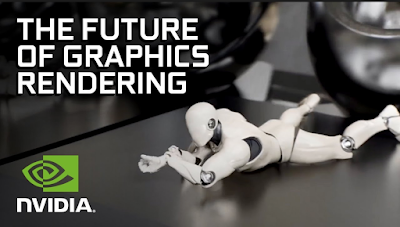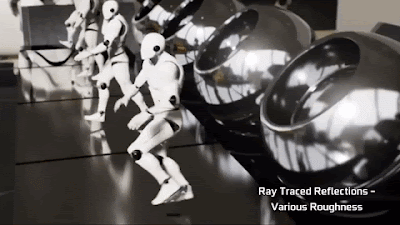In the last two months, Nvidia roped in several high profile, world class ray tracing experts (with mostly a CPU ray tracing background):
Matt Pharr
One of the authors of the Physically Based Rendering books (www.pbrt.org, some say it's the bible for Monte Carlo ray tracing). Before joining Nvidia, he was working at Google with Paul Debevec on Daydream VR, light fields and Seurat (https://www.blog.google/products/google-ar-vr/experimenting-light-fields/), none of which took off in a big way for some reason.
Before Google, he worked at Intel on Larrabee, Intel's failed attempt at making a GPGPU for real-time ray tracing and rasterisation which could compete with Nvidia GPUs) and ISPC, a specialised compiler intended to extract maximum parallelism from the new Intel chips with AVX extensions. He described his time at Intel in great detail on his blog: http://pharr.org/matt/blog/2018/04/30/ispc-all.html (sounds like an awful company to work for).
Intel also bought Neoptica, Matt's startup, which was supposed to research new and interesting rendering techniques for hybrid CPU/GPU chip architectures like the PS3's Cell
One of the authors of the Physically Based Rendering books (www.pbrt.org, some say it's the bible for Monte Carlo ray tracing). Before joining Nvidia, he was working at Google with Paul Debevec on Daydream VR, light fields and Seurat (https://www.blog.google/products/google-ar-vr/experimenting-light-fields/), none of which took off in a big way for some reason.
Before Google, he worked at Intel on Larrabee, Intel's failed attempt at making a GPGPU for real-time ray tracing and rasterisation which could compete with Nvidia GPUs) and ISPC, a specialised compiler intended to extract maximum parallelism from the new Intel chips with AVX extensions. He described his time at Intel in great detail on his blog: http://pharr.org/matt/blog/2018/04/30/ispc-all.html (sounds like an awful company to work for).
Intel also bought Neoptica, Matt's startup, which was supposed to research new and interesting rendering techniques for hybrid CPU/GPU chip architectures like the PS3's Cell
Ingo Wald
Pioneering researcher in the field of real-time ray tracing from the Saarbrücken computer graphics group in Germany, who later moved to Intel and the university of Utah to work on a very high performance CPU based ray tracing frameworks such as Embree (used in Corona Render and Cycles) and Ospray.
His PhD thesis "Real-time ray tracing and interactive global illumination" from 2004, describes a real-time GI renderer running on a cluster of commodity PCs and hardware accelerated ray tracing (OpenRT) on a custom fixed function ray tracing chip (SaarCOR).
Ingo contributed a lot to the development of high quality ray tracing acceleration structures (built with the surface area heuristic).
Pioneering researcher in the field of real-time ray tracing from the Saarbrücken computer graphics group in Germany, who later moved to Intel and the university of Utah to work on a very high performance CPU based ray tracing frameworks such as Embree (used in Corona Render and Cycles) and Ospray.
His PhD thesis "Real-time ray tracing and interactive global illumination" from 2004, describes a real-time GI renderer running on a cluster of commodity PCs and hardware accelerated ray tracing (OpenRT) on a custom fixed function ray tracing chip (SaarCOR).
Ingo contributed a lot to the development of high quality ray tracing acceleration structures (built with the surface area heuristic).
Eric Haines
Main author of the famous Real-time Rendering blog, who worked until recently for Autodesk. He also used to maintain the Real-time Raytracing Realm and Ray Tracing News
Main author of the famous Real-time Rendering blog, who worked until recently for Autodesk. He also used to maintain the Real-time Raytracing Realm and Ray Tracing News
What connects these people is that they all have a passion for real-time ray tracing running in their blood, so having them all united under one roof is bound to give fireworks.
With these recent hires and initiatives such as RTX (Nvidia's ray tracing API), it seems that Nvidia will be pushing real-time ray tracing into the mainstream really soon. I'm really excited to finally see it all come together. I'm pretty sure that ray tracing will very soon be everywhere and its quality and ease-of-use will soon displace rasterisation based technologies (it's also the reason why I started this blog exactly ten years ago).

